Due to popular demand, we're looking into AMD's Threadripper 2990WX performance using Linux. Apparently this is something we should have done since day one, according to many AMD fans, although of course this is not part of our usual battery of tests.
In case you missed it, we did an extensive day-one review of the Ryzen Threadripper 2990WX and Threadripper 2950X processors. The latter is the drop-in replacement for the previous flagship Threadripper and an overall great performer for the price. The 2990WX however is a different kind of beast, more expensive and offering more cores, but with mixed results. That's why we followed up with the mega-tasking test, a separate multi-tasking focused benchmark in an attempt to explore workstation performance of these high-end CPUs more closely.
Today we have the Threadripper 2990WX put against the Core i9-7980XE head to head using both Windows 10 and Linux, more especifically Ubuntu 18.04.1 LTS. Both operating systems were tested in their out-of-the-box configuration, so no optimizations were made.

Both test systems have been configured with 64GB of DDR4 memory, the 2990WX is limited to 3000 MHz, while the 7980XE happily accepted 3200 MHz and could go higher, but for the sake of trying to keep things as apples to apples as possible we went with low latency CL14 DDR4-3200 memory.
Benchmarks
M-queens is part of the Phoronix-Test-Suite and it was one of the few benchmarks in the suite that we could get to work on Linux and Windows as well as AMD and Intel hardware. The test suite was a bit of a nightmare to work with to be honest.
The benchmark measures the time to solve the n-queens problem, m-queen just uses a much larger board making it a longer more complex problem. Here we are measuring the time to solve and as you can see the 2990WX does this in around half the time of the 7980XE using either Windows or Linux which is extremely impressive.

Stockfish is a free and open-source chess engine, available on various platforms. It's consistently ranked as one of the best chess-engines and is the strongest open-source chess engine in the world. The speed of this test is measured in nodes positions per second, essentially positions per second and this is determined entirely by the processors performance.
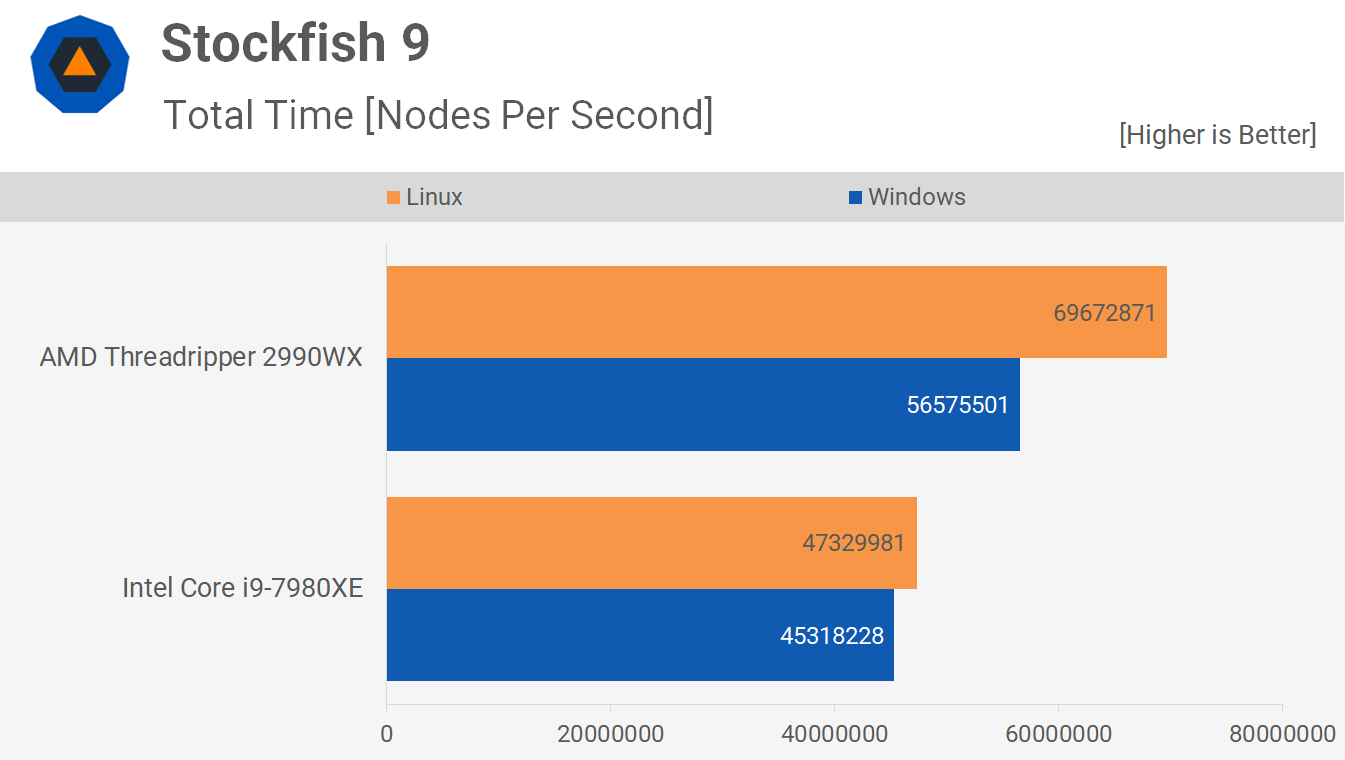
Again we see when it comes to chess the 2990WX is a beast using Windows or Linux. That said this time we do see a 23% performance uplift for the 32-core processor when using Linux. Meanwhile the 7980XE only saw a 4% performance increase when testing with Linux.
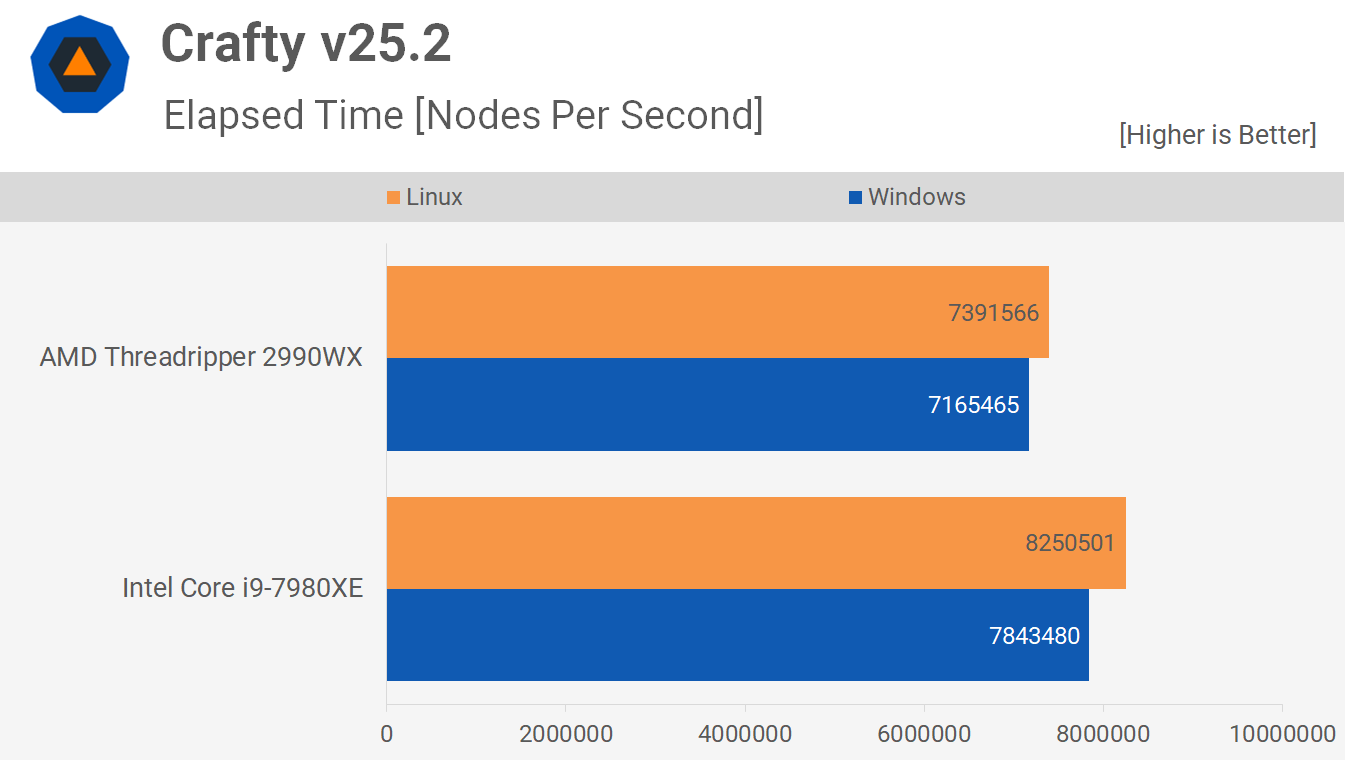
The last chess benchmark we're going to look at is Crafty and again we're measuring performance in nodes per second. Interestingly, the Core i9-7980XE wins out here and saw the biggest performance uplift when moving to Linux, a 5% performance increase was seen opposed to just 3% for the 2990WX and this made the Intel CPU 12% faster overall.
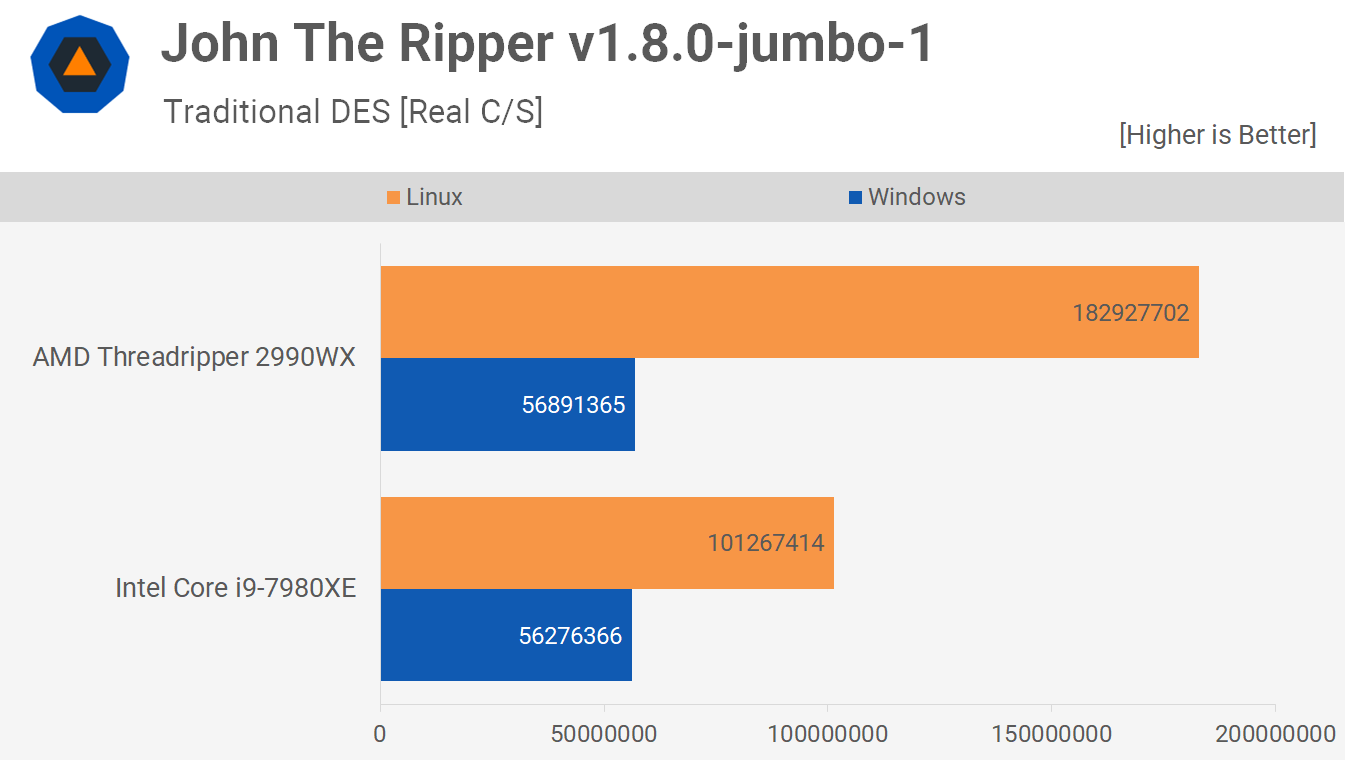
John the Ripper is a password cracker that's currently available on multiple platforms including Linux and Windows. Using the traditional Data Encryption Standard we see that the 2990WX and 7980XE execute roughly the same amount of Crypts per second when using Windows. However using Linux it's a completely different ball game. Here the 7980XE is a whopping 80% faster but it's the 2990WX that's truly impressive delivering 3x more performance making it roughly 80% faster than the Core i9 processor.
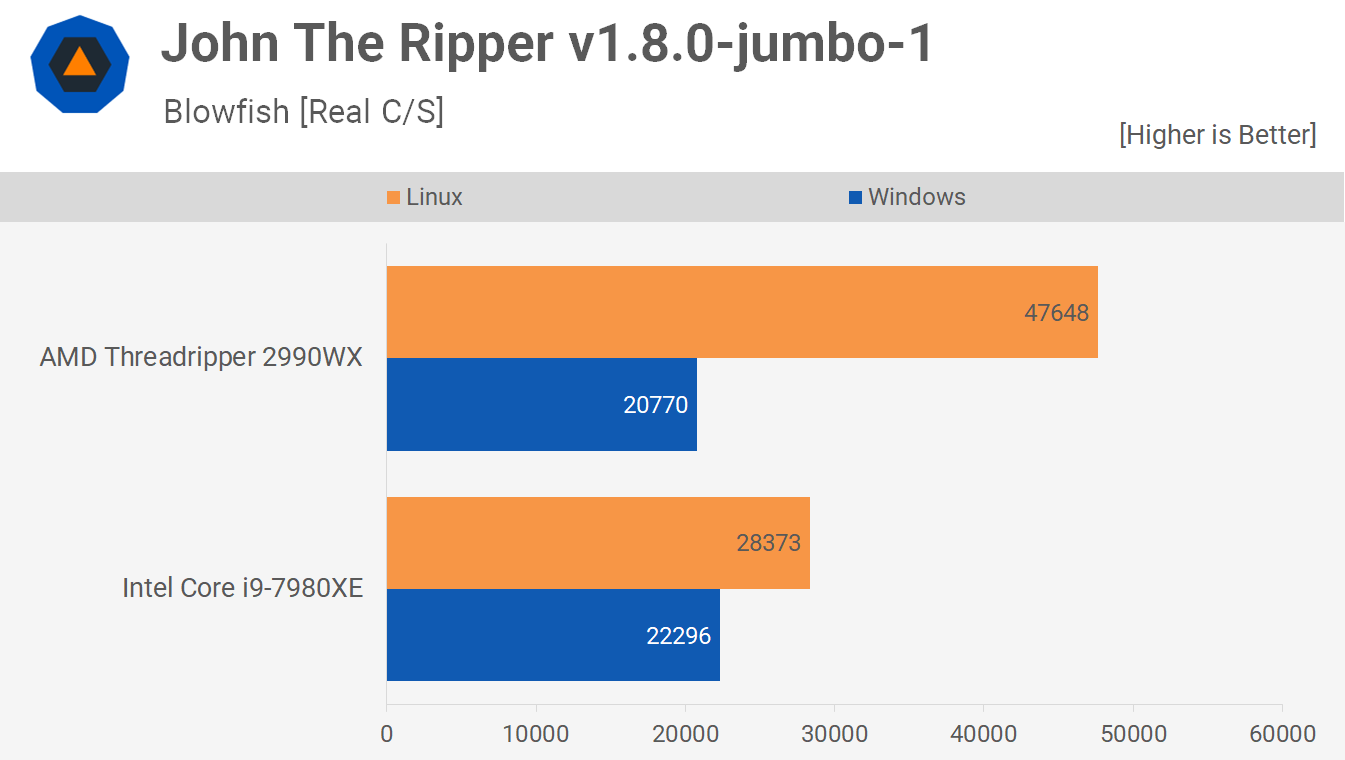
We find a similar story when using the Blowfish cipher. Here the 7980XE is 7% faster on Windows but the 2990WX is almost 70% faster when using Linux. So while the 32-core processors looks less than impressive using Windows 10, it looks incredible using Linux.
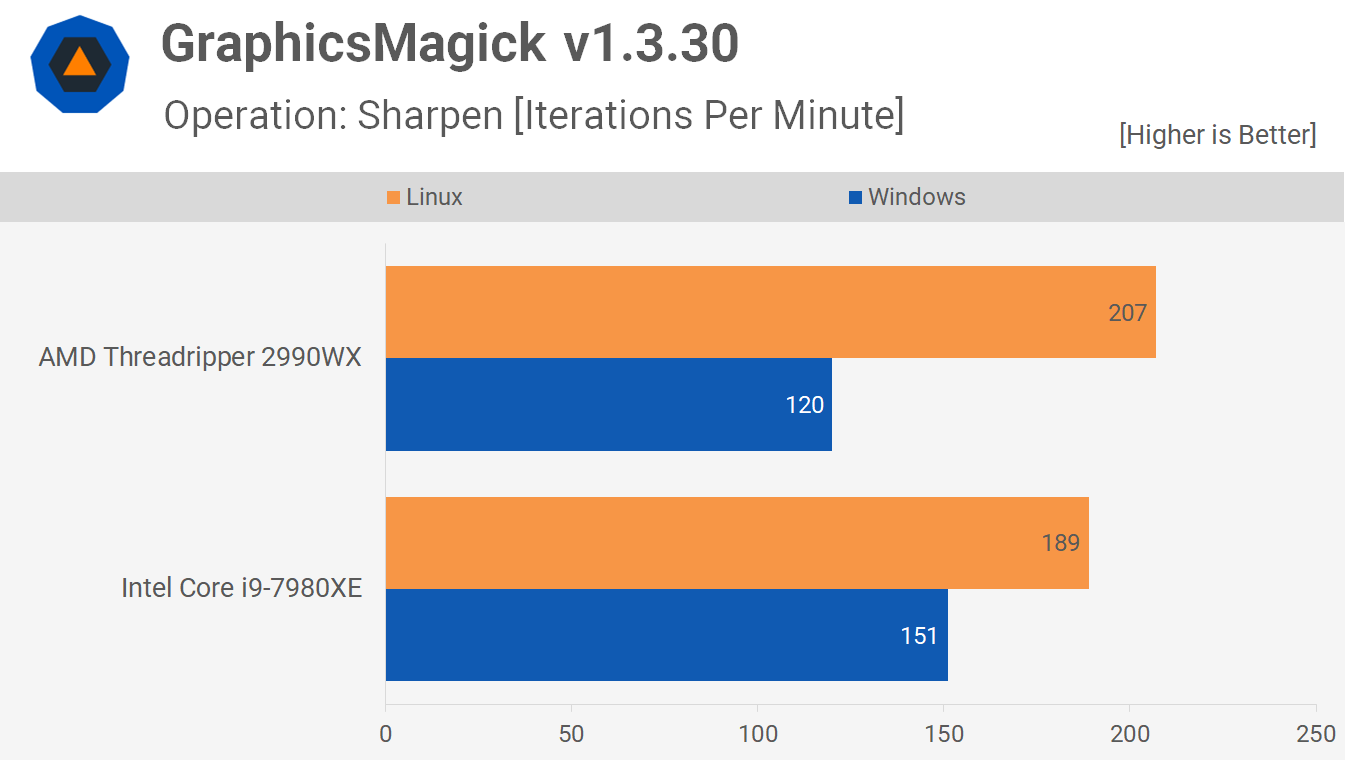
GraphicsMagick is a simple but highly efficiency software package for viewing and manipulating images. It supports a massive range of formats and image processing is heavily multi-threaded. It's used by several websites to process large numbers of uploaded images. Here we are looking at the sharpen performance which is measured in iterations per minute, so higher is better.
Using Windows 10, the 7980XE is 26% faster than the 2990WX, however using Linux turns that around and now the 32-core processor is 10% faster. Not a massive win but the AMD processor does come from well behind on Windows to beat the Core i9 on Linux.
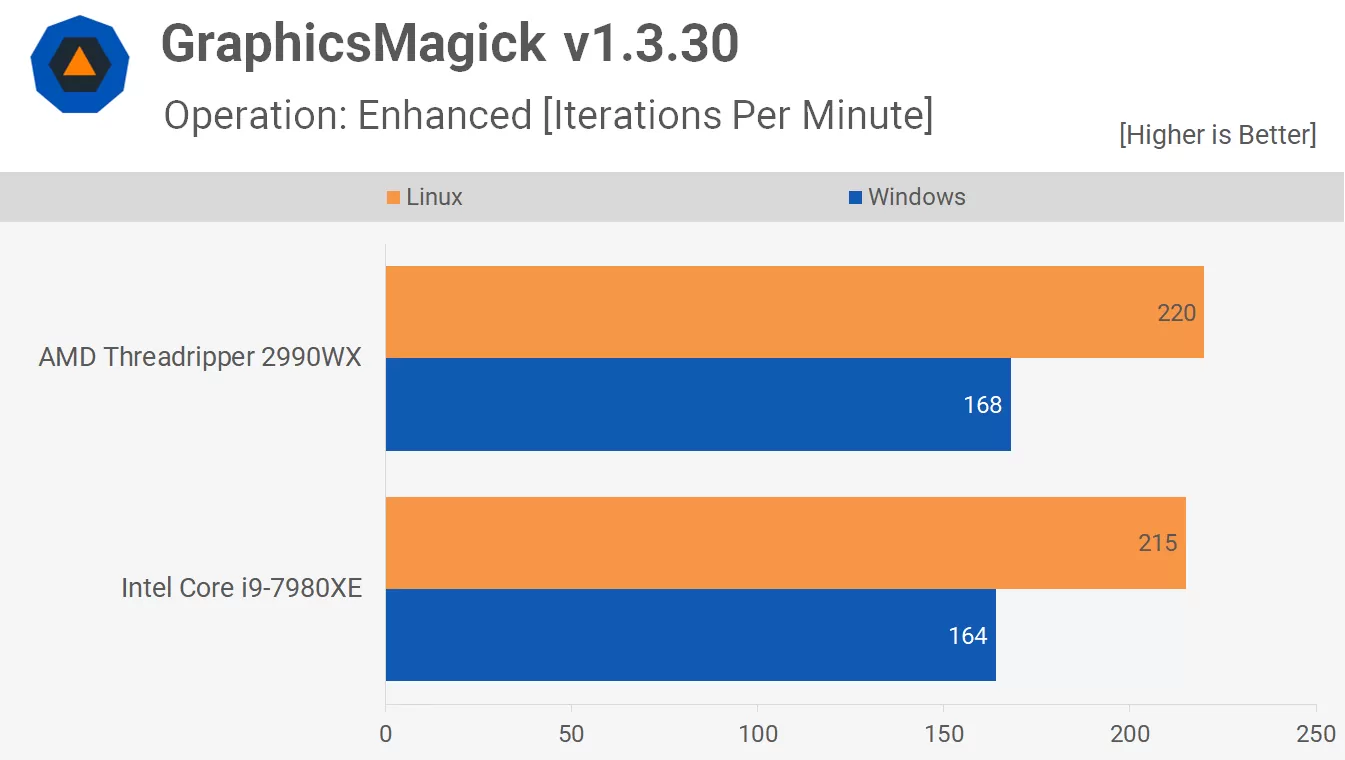
The enhanced operating performs around 30% better with Linux but we see similar gains for both the AMD and Intel processors, the end result it a minor win for AMD.
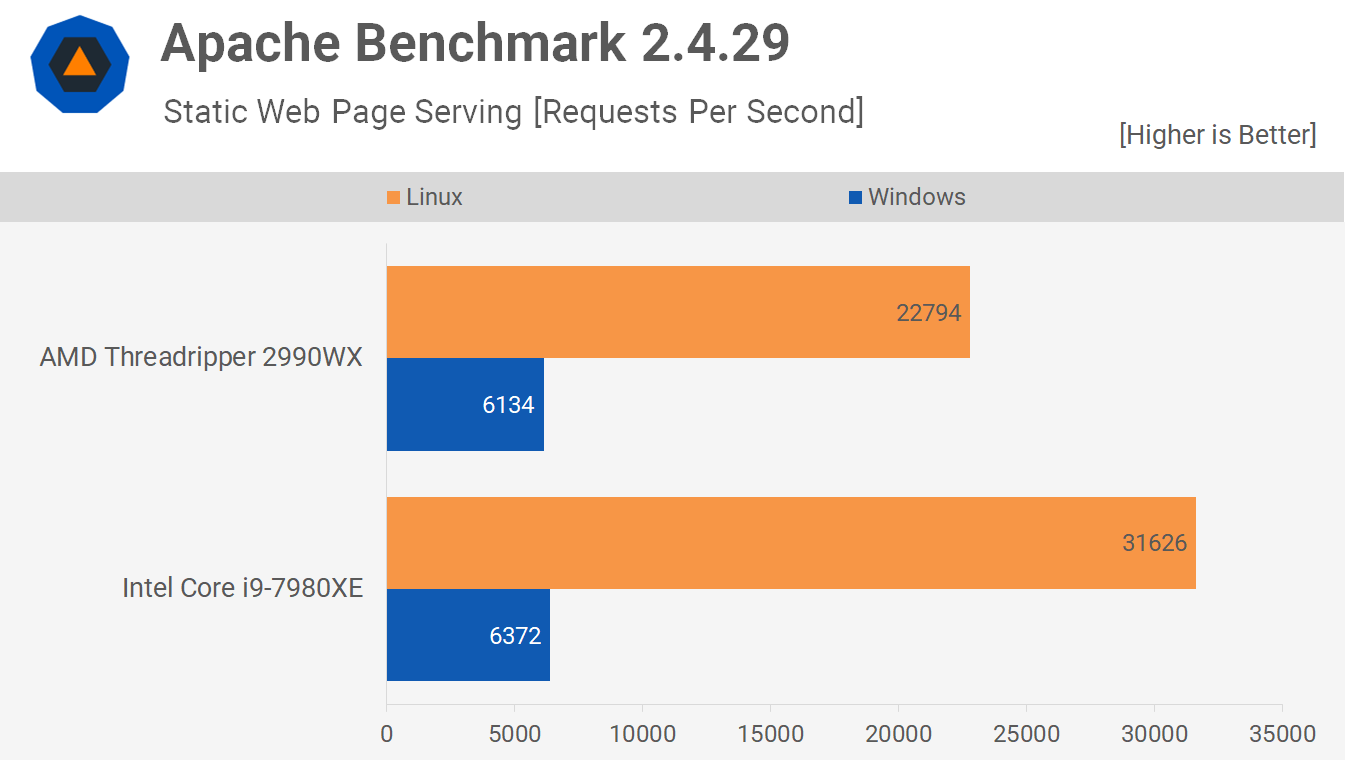
Next up we have the Apache Benchmark which measures the performance of HTTP web servers and as you can see performance is extremely poor on Windows. Windows Server does fair a little better, but still gets smashed about by Linux, which is why most web servers run Linux (e.g. TechSpot uses nginx instead of Apache on Linux boxes). Anyway, on Windows 10 the 7980XE was 4% faster than the 2990WX, but on Linux the 18-core processor was almost 40% faster, so not a great result here for the 2990WX.
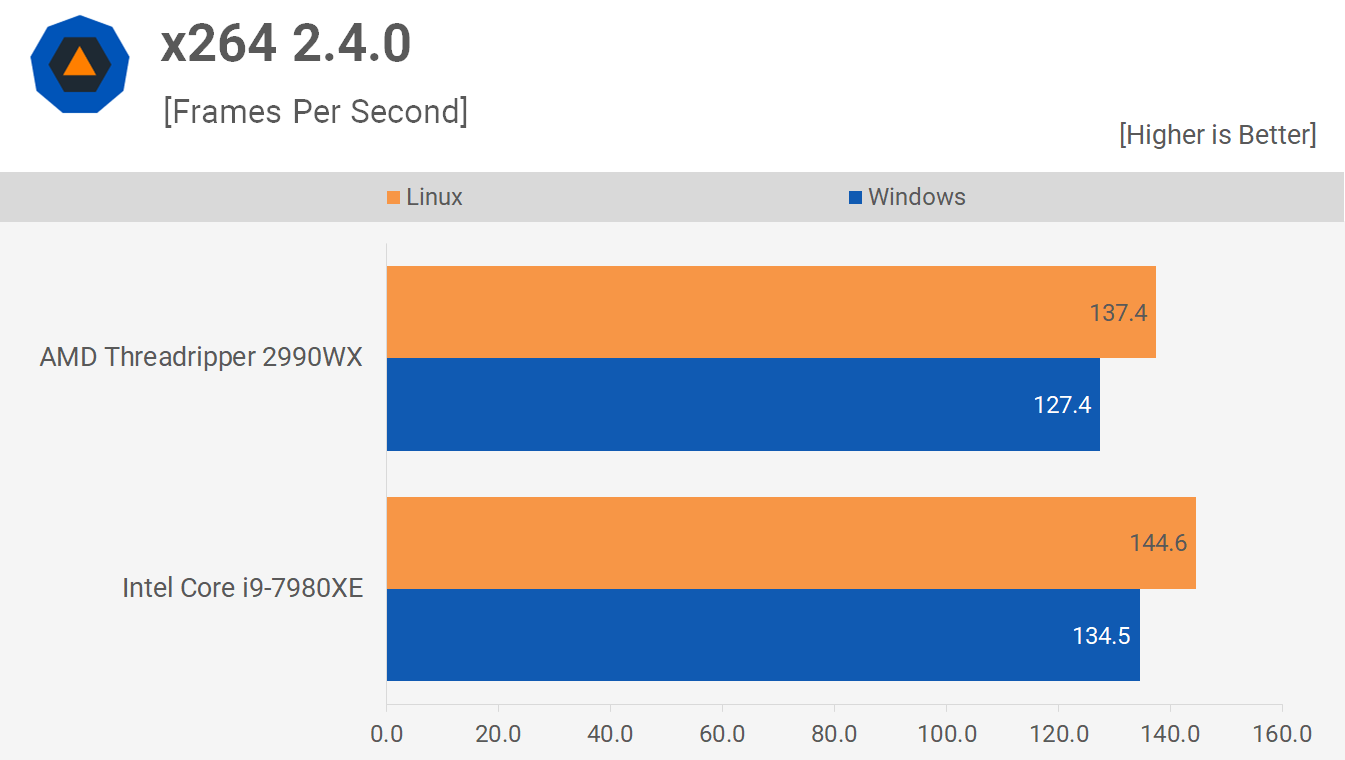
We've seen previously that encoding performance with the 2990WX isn't great and again we see that the 7980XE is 6% faster using Windows. We see much the same using Linux, the 7980XE is able to edge out the 32-core processor. So for encoding workloads Linux appears to do little to help the 2990WX out.
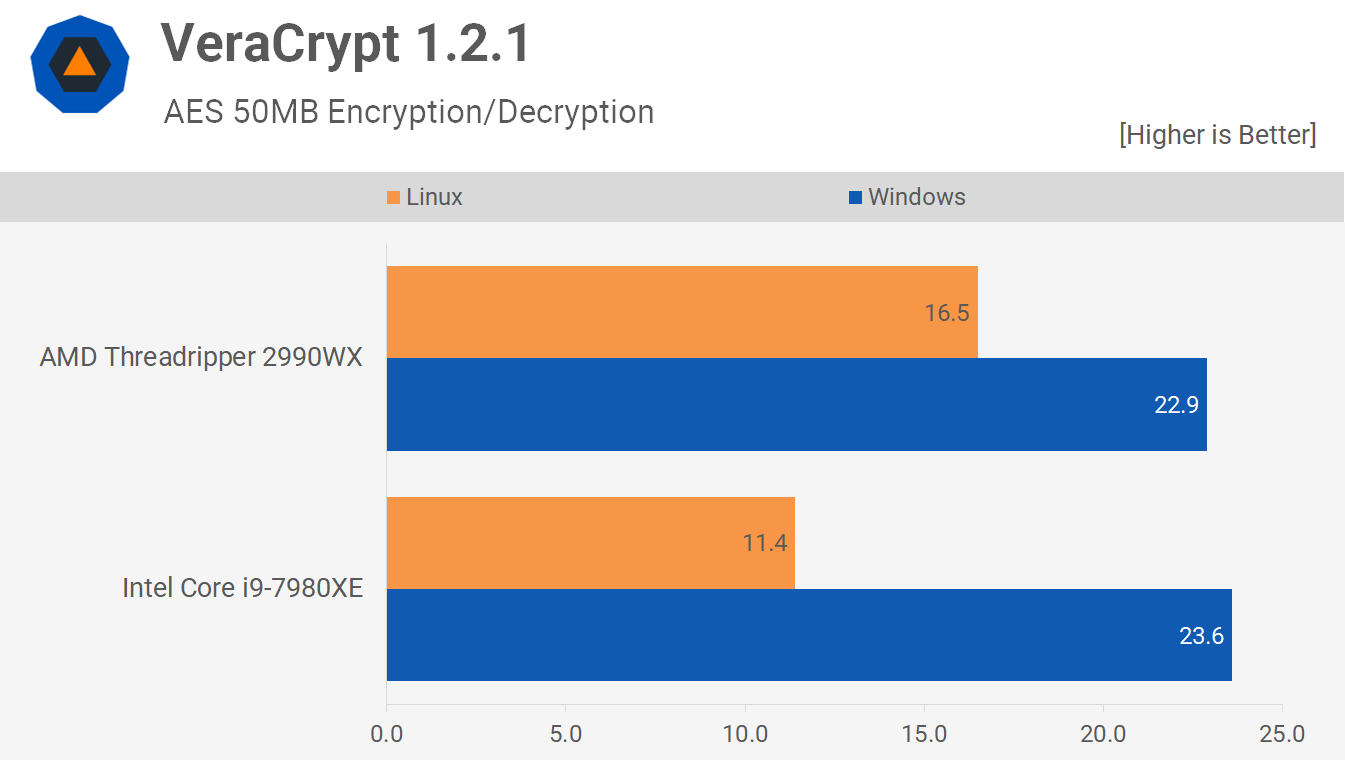
The 2990WX also sucked in our VeraCrypt benchmark and we find some odd results with Linux. For the 50MB test the 2990WX was slightly slower than the 7980XE when using Windows 10. But then Linux tanks performance, particularly for the 7980XE.
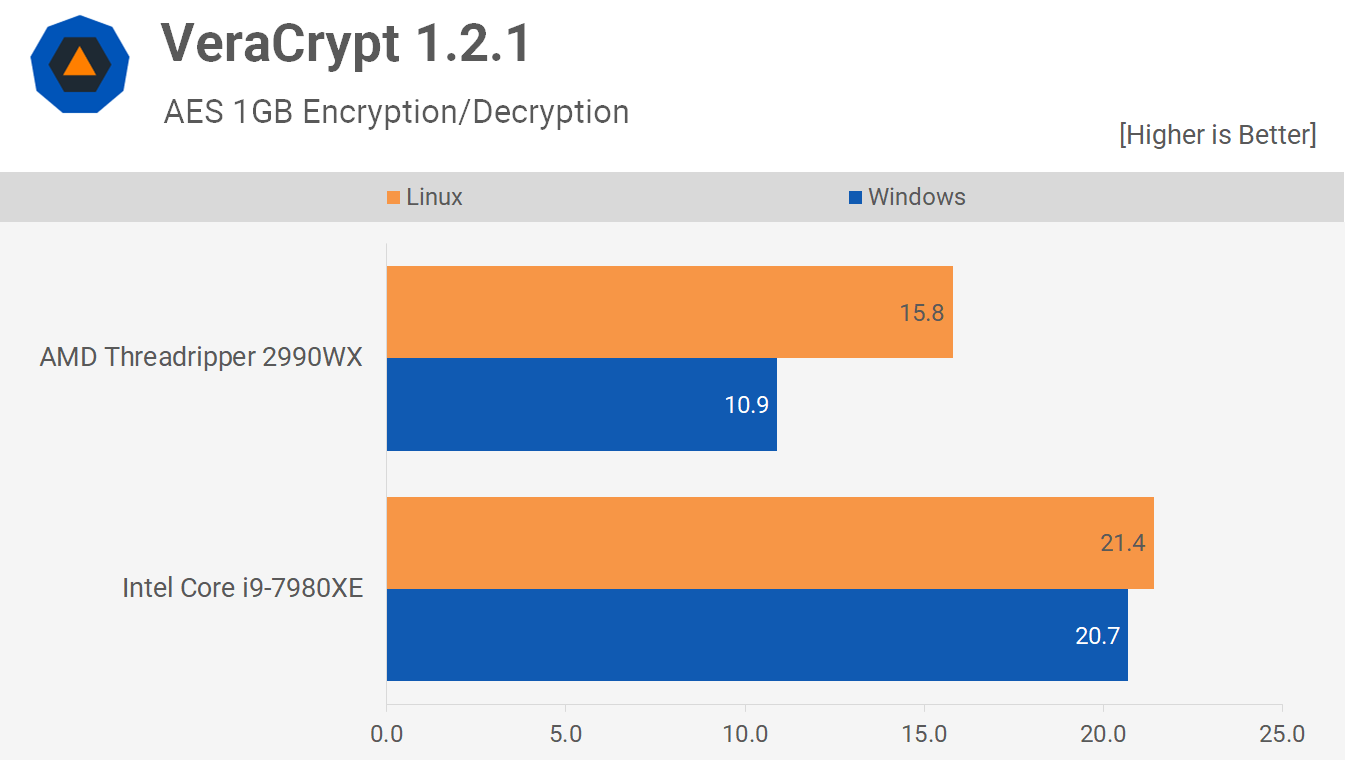
But where the 2990WX really struggled on Windows was on the memory intensive 1GB test. Here it offered half the performance of the 7980XE. This result is improved on Linux, but even so, the 7980XE was still 35% faster. So the 1GB results are roughly what we were expecting to find, we're not sure what's going on with the 50MB results using Linux though.
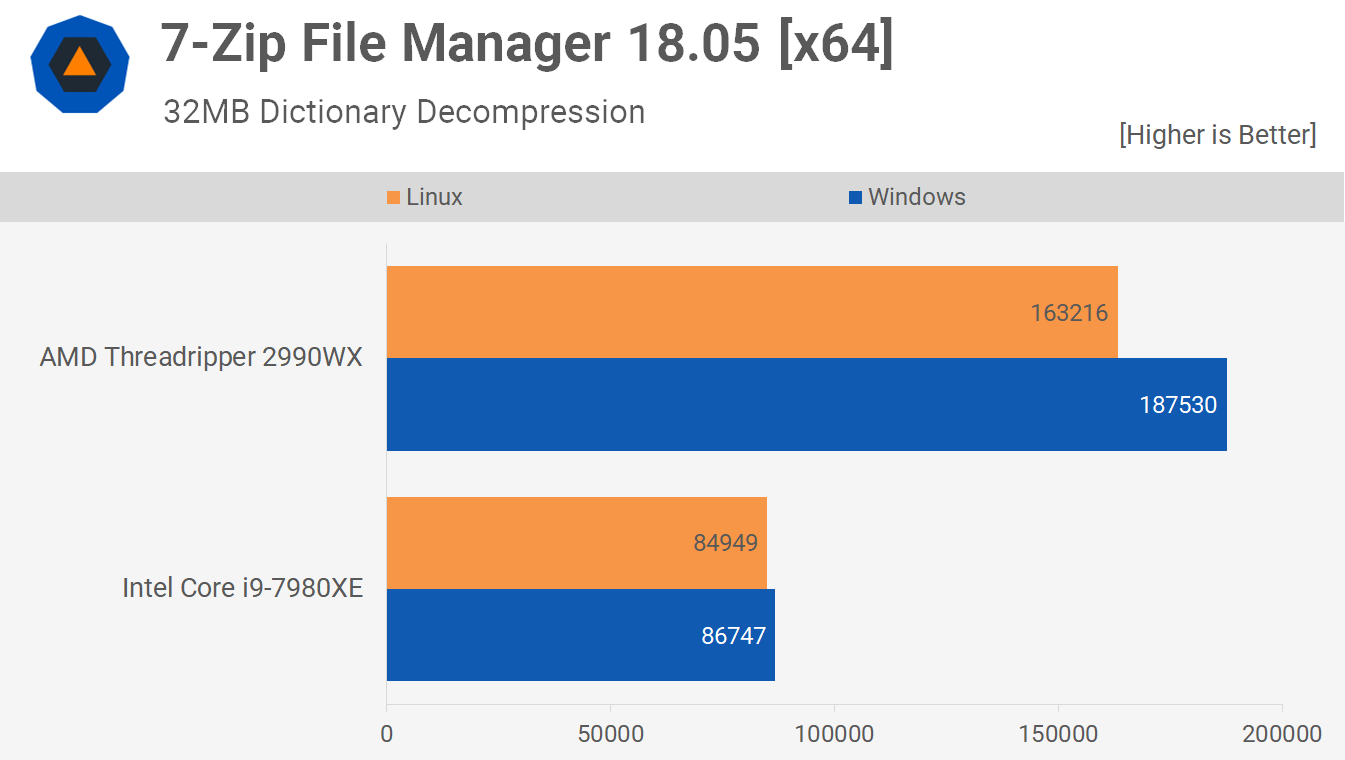
We found some odd results using 7-zip on Linux as well. The 2990WX's exceptional decompression performance was reduced by 13% when using Linux opposed to Windows 10. The 7980XE also saw performance drop off, though it was very minor.
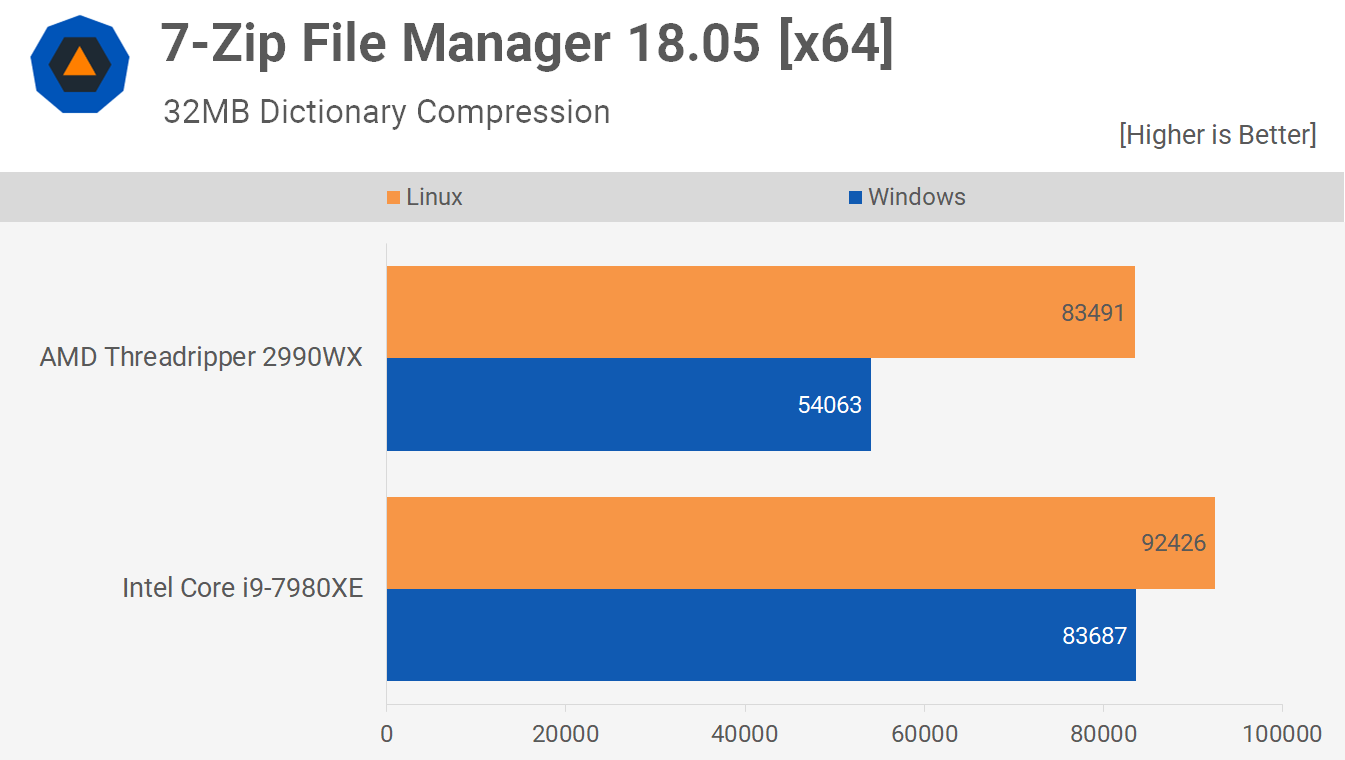
Compression performance for the 2990WX was drastically improved, here we see a massive 54% performance uplift. That said the 7980XE also enjoyed a performance boost, though it was a much smaller 10% increase. Still this meant overall the 7980XE was still 11% faster than the 2990WX.
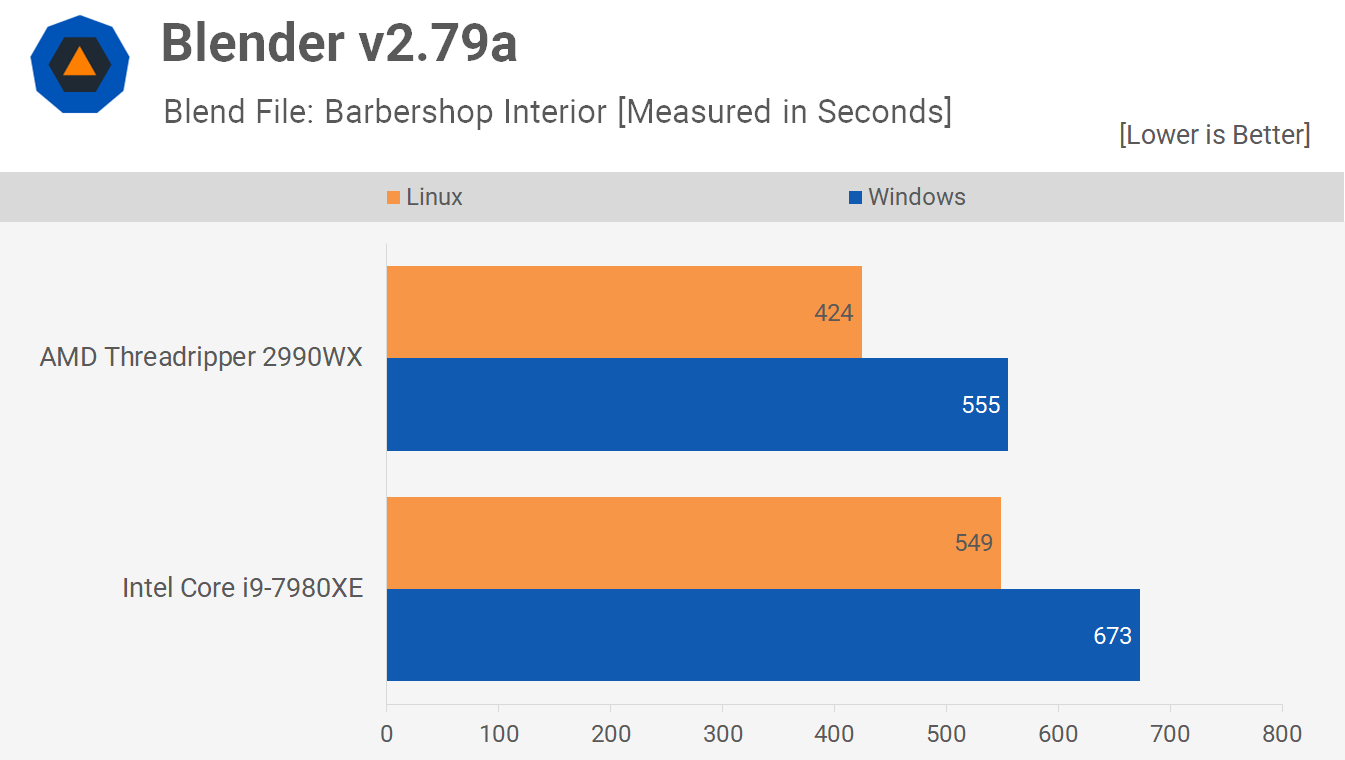
Last up we're going to run the Blender Open Data benchmark suite and we're expecting positive results for the 2990WX here since it's already proven to be a rendering power house. Here we have the Barbershop Interior test and we're measuring completion time in seconds.
The 7980XE was 23% faster using Linux, while the 2990WX was 31% faster. This meant whereas the 2990WX was 21% faster than the 7980XE on Windows, it's 29% faster using Linux.
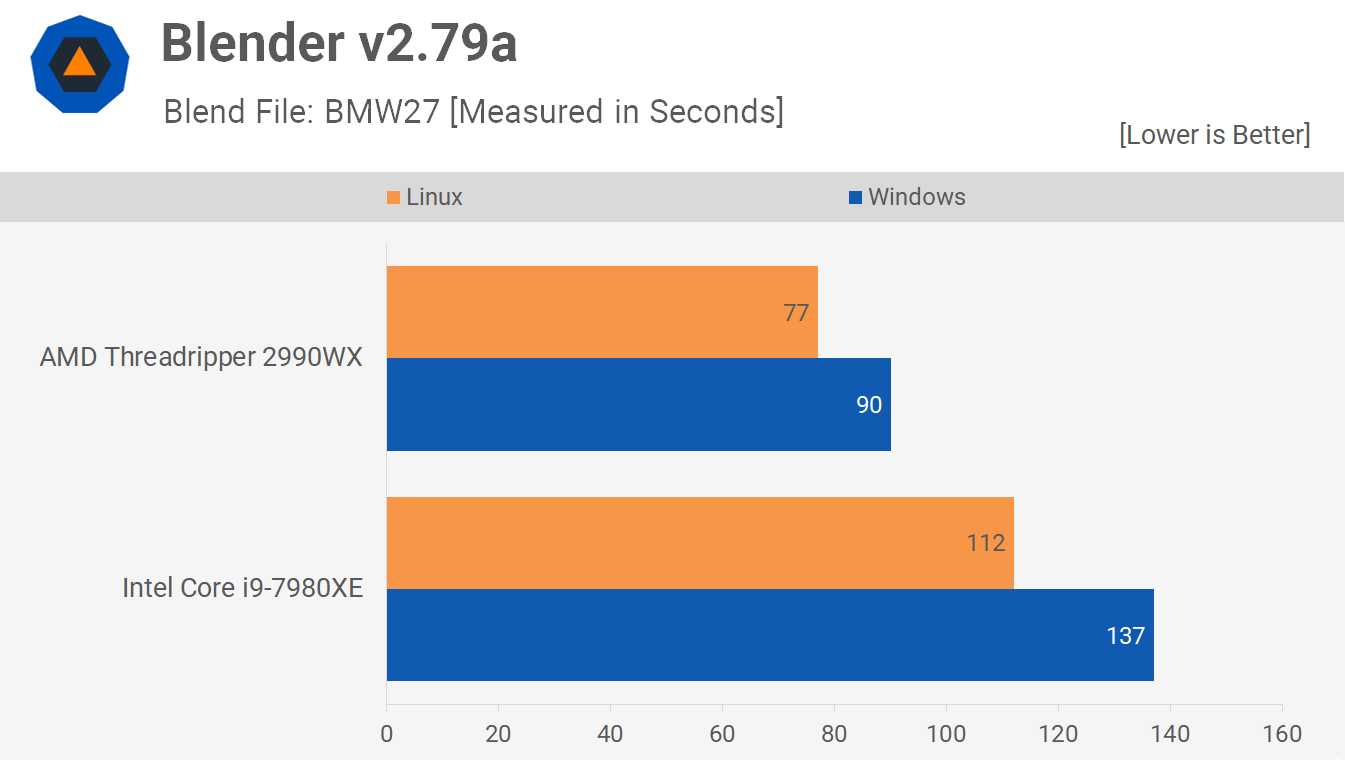
We see a slightly different scenario with the BMW27 test though the outcome still sees the 2990WX well ahead. Still where as the 32-core processors was 52% faster using Windows 10, that margin was reduced to 45% with Linux.
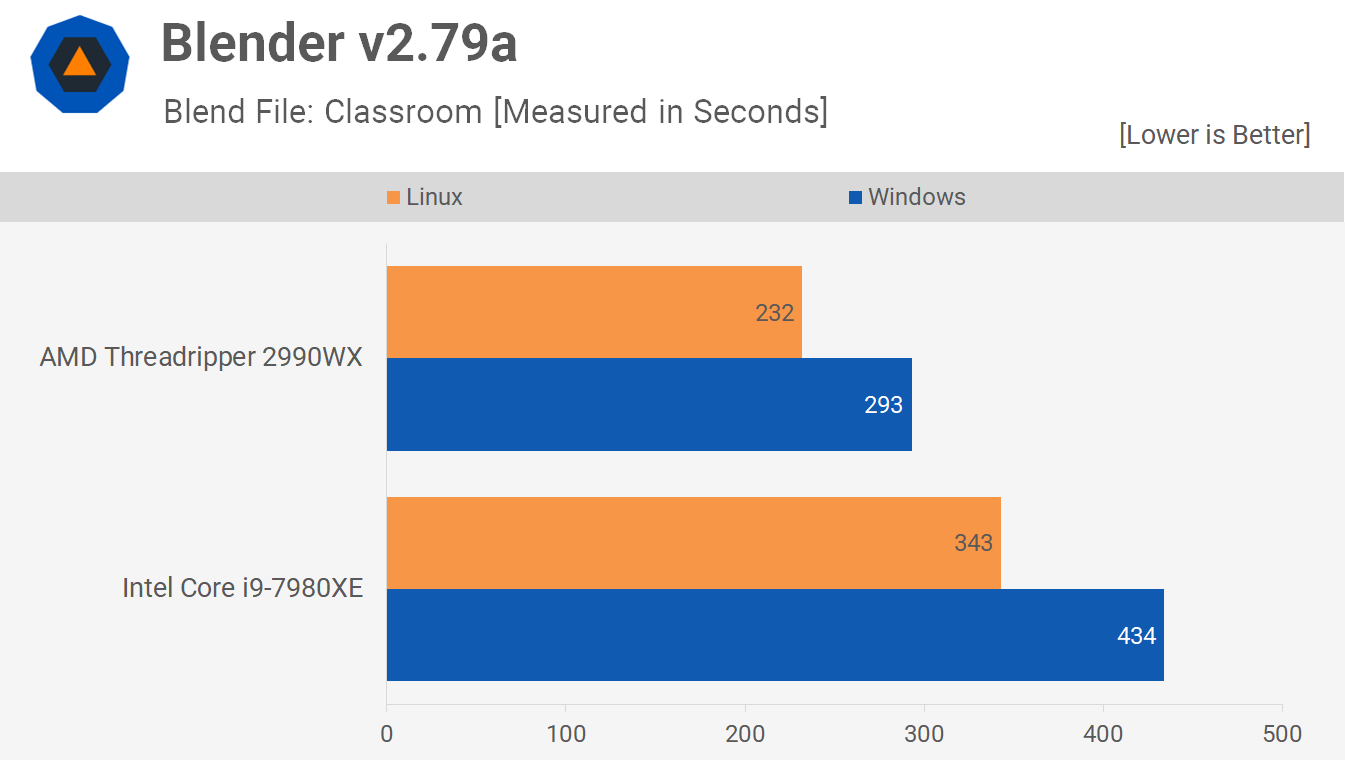
This time we see similar scaling using either CPU, both were 48% faster using Linux for the Classroom workload.
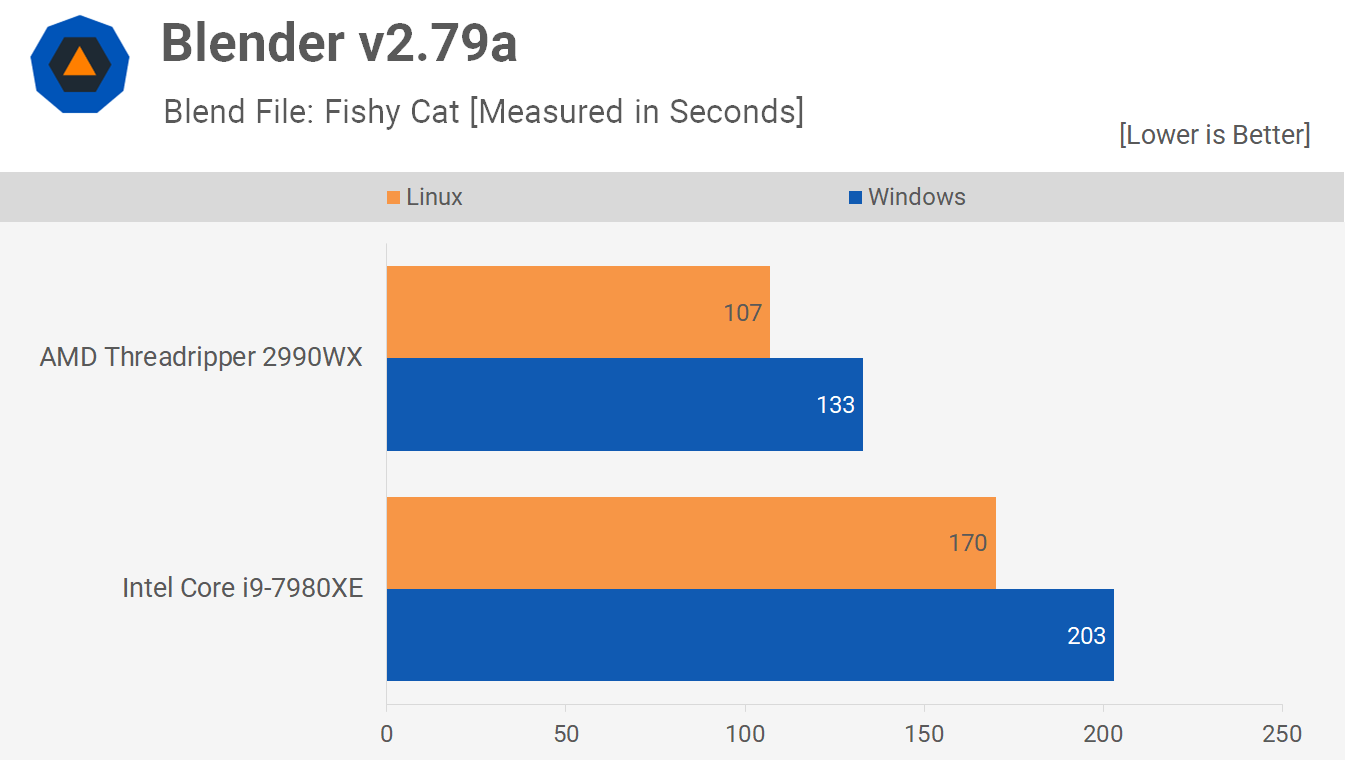
This time Linux slightly favored the 2990WX making it 59% faster where as it was 52% faster using Windows.
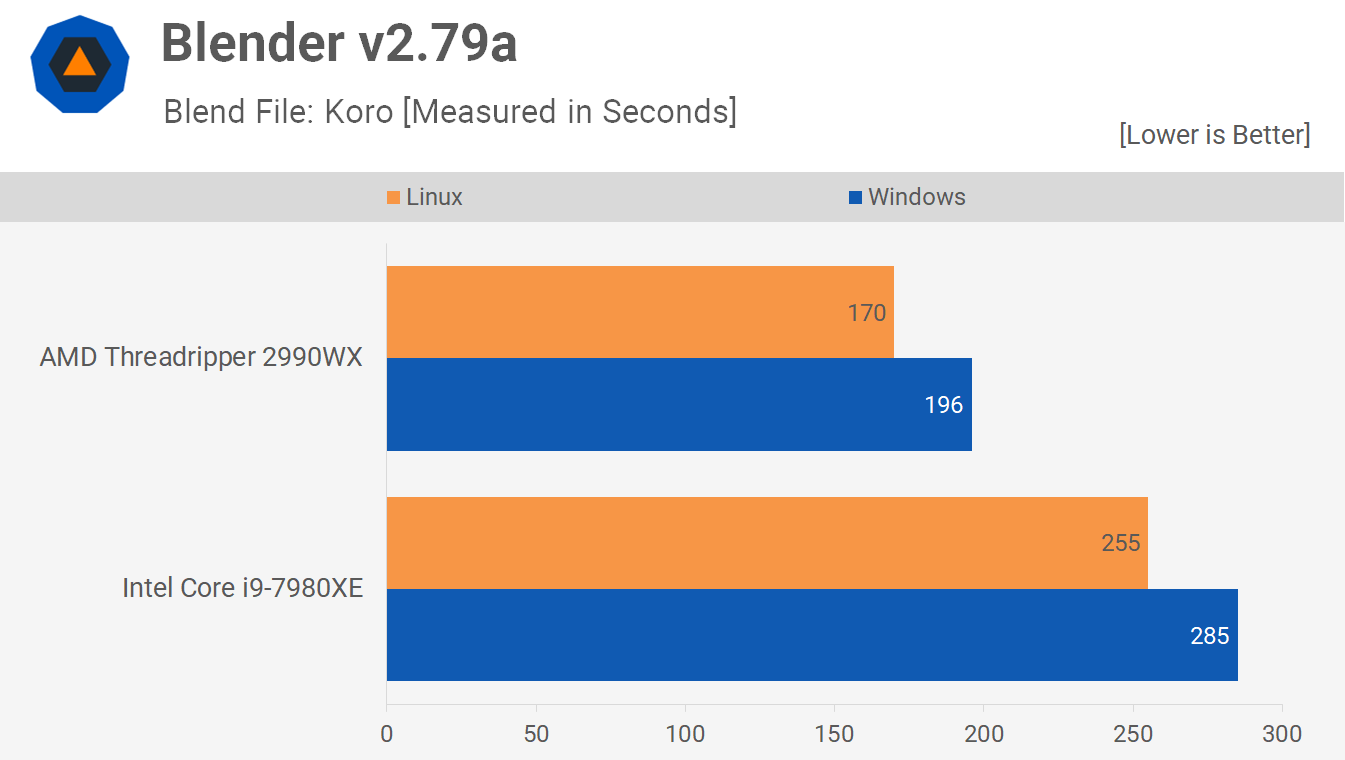
We see a similar story with the Koro workload, Linux slightly improves the 2990WX's position, but overall both CPUs see good gains on Linux.
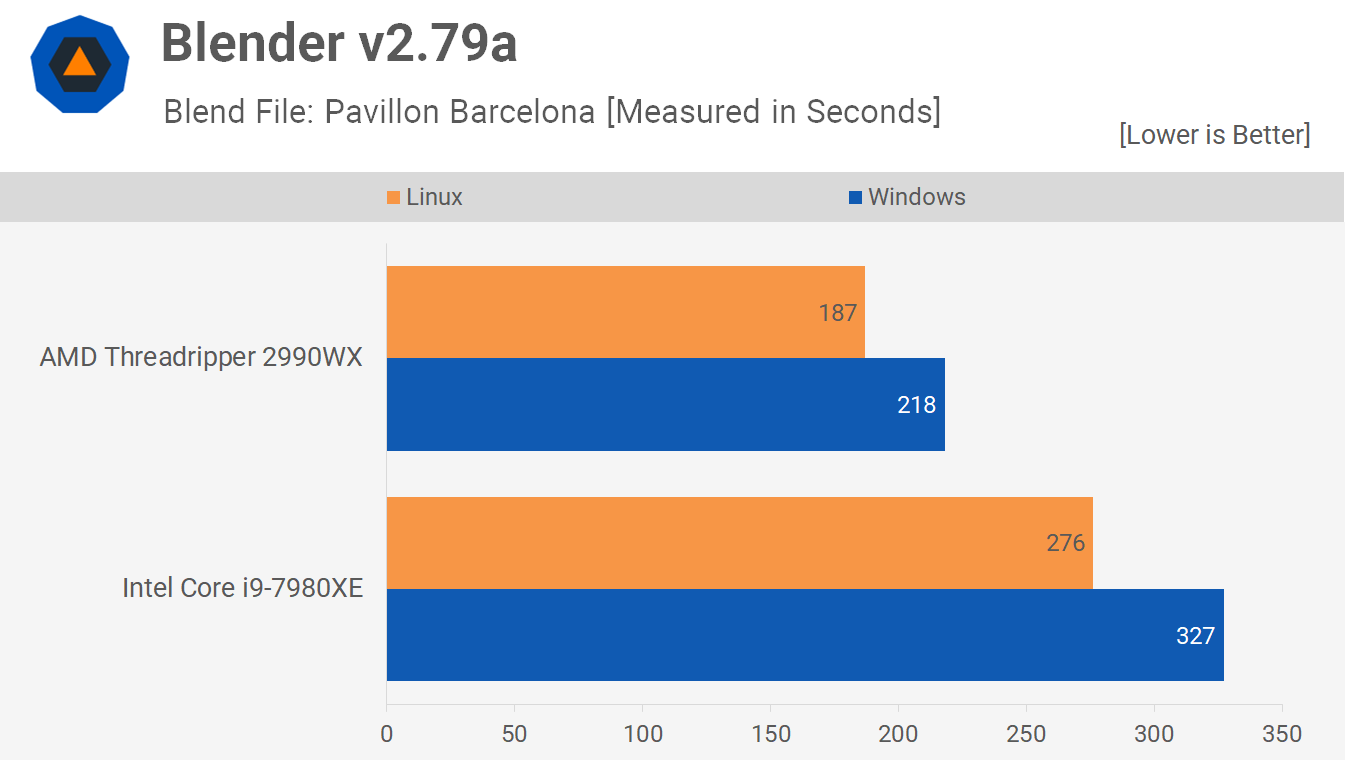
Then we have the Pavilion Barcelona workload and we see more of the same, so time to wrap this up.
Closing Remarks
So is Windows 10 gimping the Threadripper 2990WX's performance? Unquestionably yes, but it's gimping the 7980XE to a certain degree as well. If you were to just compare the 2990WX using Linux and Windows 10 the situation would appear a lot more extreme than it really is. For example, you'd conclude that the 32-core processor is going to wreck the 7980XE by an even more extreme margin when in fact both CPUs see an almost identical performance uplift.
Meanwhile, programs that were problematic on Windows such as 7-zip and VeraCrypt still provide us with odd results. For example the 2990WX's compression performance was strengthened, but the decompression performance was weakened. Still overall Linux did provide a better balance.
Though we could still observe the impact of the multi-die design on the 2990WX and its "limited" memory bandwidth to put it in some way, in the 7-zip compression test, even on Linux and performance jumps all over the place during the test, but the average ended up being very similar after each run.
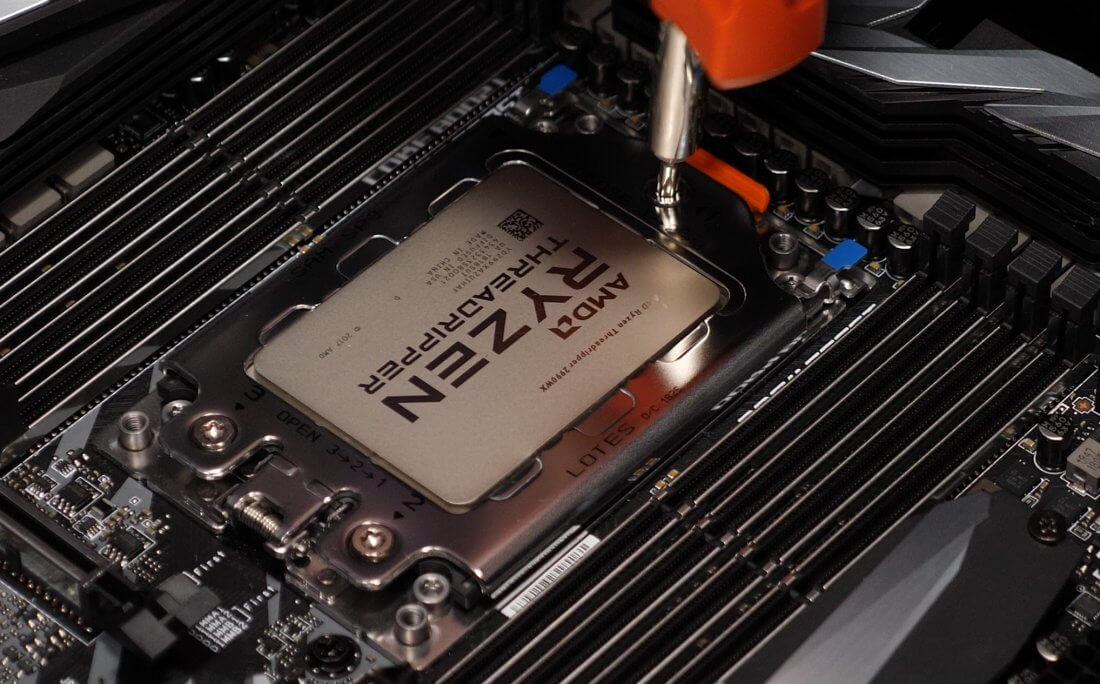
Encoding performance also remains lackluster, though we have only managed very limited testing on Linux so far. As for for non-memory sensitive workloads like the Blender renders, here the 2990WX is a beast. This also includes the chess and password-cracking benchmarks.
So again, depending on what you plan on using the 2990WX for will determine just how useful it really is. It's our opinion that there's room for Windows 10 optimizations in order to better utilize, or better manage, these core-heavy CPUs. Improved thread scheduling isn't going to make the 2990WX a weapon in workloads where it's struggling, but it's our hope that it can at least match the 2950X under those conditions, rather than come in much slower.
Results like what we saw in the GraphicsMagik sharpen test were promising as the 2990WX went from being much slower than the 7980XE on Windows to slightly faster on Linux, and we saw the same thing with John The Ripper. Still, this is only a small sample of applications and doesn't really do much for content creators.
We'd love to test out Premiere on Linux to see if our custom warp stabilizer test running a dozen instances simultaneously provides better results. On Windows this test maxes out the 2990WX, but the resulting performance is very poor.
Wrapping this one up we have to say, the few days we spent messing around with Linux were interesting, but ultimately made us more appreciative of Windows 10's desktop OS experience.
